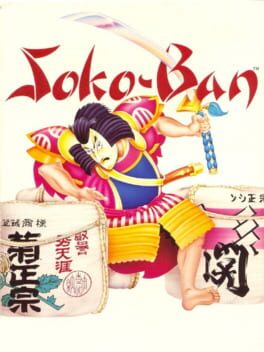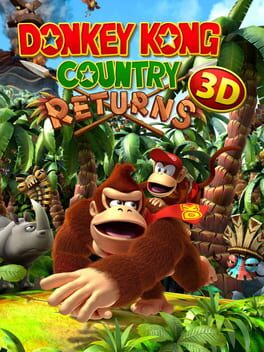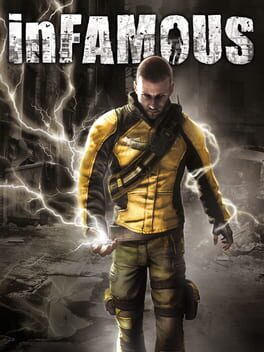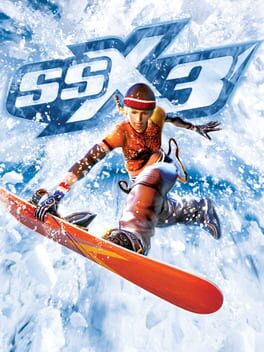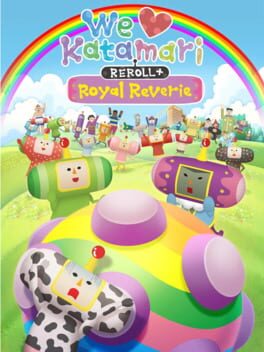merlot
7 reviews liked by merlot
Soko-Ban
1982
It's the laborer's code, an allegiance to classist logic hiding behind the veneer of a machine. Who's to say you can't pull these blocks other than the rules of the game? These walls and obstacles entrap you, make you feel the claustrophobia that comes with poverty and exploitation. Surrounding these microscopic tasks are naught but void—just the fraught acceptance of capitalism's encompassing reality. Here's a gallery of A-to-Z state machines one yearns to find freedom from, yet masks the possibilities of other, better worlds beyond the transactional paradigm. A purgatory wrapped in darkness, and the only clear way forward is toiling under this system for eternity.
Even then, the original Sokoban is more than it seems. One of the final puzzles tasks you with moving blocks in a seemingly impossible way. That is, until you accidentally push through a wall, destroying a piece of it which lets you finally manipulate the block stack without failure. All future official versions of the 1982 classic would ditch this element. After all, it sounds frustrating to need to discover or know this completely un-telegraphed mechanic, doesn't it? Kind of like how your boss refuses to explain the finer details of your job, or even how to complete a seemingly simple yet elusive task? I can only imagine how the warehouse keeper must feel, hopelessly exhausting every possibility except the most absurd, contradictory one that never worked before. And it doesn't feel like an accomplishment, or a stroke of genius. You either know because someone finally told you, or you accidentally fell into success instead.
Hiroyuki Imabayashi was a retail clerk at the time he got his first computer, a Sharp MZ borrowed from a friend. The games he subsequently played on his later PC-8001 and PC-88 units, as well as an imported Apple II, inspired him to make a little game of his own, reflecting what he saw in his environment. What possessed a well-read, movie-loving record store salesman to make one of the great early pro-labor digital puzzlers? I'd like to ask him myself, though I suspect he'll answer with something like "I never thought about it that deeply". We're all so ingrained in this system of the world that we can feel its pressure and imposition as we grow ("coming of age" indeed), even if we can't always articulate that sensation. Sokoban, with all its elementary yet convoluted mind-twisters, inspires what must have seemed like a revolution in video games as introspection.
It's no surprise to me that Imabayashi soon spent way more time writing and designing graphic text adventures, most often the kinds of pulpy mysteries he grew up with. He still relies on the perennial success of Sokoban's design concept for his livelihood, but in doing so has found time and space in life to just be. What he'd created from a working man's understanding of his favorite childhood card games had forever altered game design for a post-modern era. How does one surpass that? So he moved laterally, handing the reigns of commercial ambition to others at the studio he started in Takarazuka. And Thinking Rabbit certainly did experiment, yet the founder and his co-workers now work for Falcon Co., having sold their company and IPs to a former contractor following the Japan's economic and investment stagnation in the '90s. What keeps them going is, of course, a certain block-pushing Ship of Theseus most often starring some wide-eyed young man trying to buy a car or woo his love, among other bootstraps window dressing.
While Imabayashi's adventure games gained a notable following for years to come, his debut game has long since evolved beyond what he'd been able to match. Why work to reinvent that which will forever morph to other designers' wills, or just slot into myriads of other frameworks as shown by creations like Baba is You? Yet for all the appreciation Imabayashi's earned for his post-Sokoban legacy, the software which freed him has ironically trapped his image in amber. Block puzzles in video games are just too useful and universal—so the death of the author continues. I can go on my mobile app storefront of choice and find a seemingly endless number of Sokoban clones, many from first-time developers learning to code games. There's a whole cottage industry of bedroom coders building off what this once fanciful PC-8801 experiment started. And he knows all too well what it's done for him and shackled him to in the process.
I suppose this florid look at a generally self-explanatory media artifact isn't helping much. Then again, my lack of Japanese language skills makes it hard to dig into Thinking Rabbit's adventures without duress. Sokoban has become a staple of gaming across the world, spanning ages before and after its origins. We're as familiar with its principles, iterations, and insinuations as we are with backgammon or chess! And just as those pastimes silently teach lessons and etiquette pertaining to the social-economic structures birthing them, Sokoban too reflects its environment. This game ran on everything, in even more forms than Doom. It arguably had a predecessor in Nob Yoshigahara's Rush Hour puzzle, and even the lowliest of early digital handhelds like Epoch's Game Pocket Computer featured the block pusher. Ubiquity both made and destroyed Sokoban as an essential distillation of logic challenges previously fragmented across many arcade, computer, and board games the world over.
Takurazuka's greatest software creation gave players the illusion of control over time-space puzzles previously meant to eat quarters in game centers. It transferred the traditions of puzzle boxes and transfixing toys into binary. And from this black box of restrictions, revelations, and repetition comes the final realization: Sokoban invokes a wager of faith for or against capitalist reality. Those who succeed in unraveling or merely memorizing these menial tasks can feel at least a little vindicated. Those who fail will quickly realize the futility and fruitlessness of labor you give but can never keep, even if they eventually succeed under the circumstances. Everyone who's ever complained about "unfun" box pushing in a Zelda game could relate to this. All those who criticized and/or continue to lambast the likes of Papers, Please should consider the power of games as simple as this to provoke praxis in this festering world.
Maybe the most actionable thoughts Sokoban leads to now are playing a different, more fun and accessible game. We're so accustomed to what this PC-88 classic offers, and binds us to, that it's nothing worth investing time in. In this sense, Imabayashi's folly has become the kind of effortless un-game or anti-game others try too hard to sell us on. There's nothing glamorous, fantastic, or conventionally laudable about pure, unadorned Sokoban. It's too good at what it does, meaning its spiritual successors must imagine more creative, more engrossing variations on its themes. Hell, the whole idea of Baba is You can basically boil down to "what if we challenged the player to make a new Sokoban game in every single level?". Sokoban transcended its mere game-ness long ago; today it's both a platform and a bad example to follow. More than most "classic" games, this one has morphed into an idol of ludological dreams, nightmares, and ambitions subservient to the possible. Sisyphus would be proud.
For all the ramblings and minutiae I could go on about, I think you should try the original Sokoban and come to your own conclusions. The PC-88 game and its ports certainly show their age, but also how timeless they remain. Without factoring all of what Sokoban was, is, and will be into any discussion of Japanese PC software and beyond, any history of puzzle genres and tropes will be incomplete. Thank you for coming to my TED talk.
Even then, the original Sokoban is more than it seems. One of the final puzzles tasks you with moving blocks in a seemingly impossible way. That is, until you accidentally push through a wall, destroying a piece of it which lets you finally manipulate the block stack without failure. All future official versions of the 1982 classic would ditch this element. After all, it sounds frustrating to need to discover or know this completely un-telegraphed mechanic, doesn't it? Kind of like how your boss refuses to explain the finer details of your job, or even how to complete a seemingly simple yet elusive task? I can only imagine how the warehouse keeper must feel, hopelessly exhausting every possibility except the most absurd, contradictory one that never worked before. And it doesn't feel like an accomplishment, or a stroke of genius. You either know because someone finally told you, or you accidentally fell into success instead.
Hiroyuki Imabayashi was a retail clerk at the time he got his first computer, a Sharp MZ borrowed from a friend. The games he subsequently played on his later PC-8001 and PC-88 units, as well as an imported Apple II, inspired him to make a little game of his own, reflecting what he saw in his environment. What possessed a well-read, movie-loving record store salesman to make one of the great early pro-labor digital puzzlers? I'd like to ask him myself, though I suspect he'll answer with something like "I never thought about it that deeply". We're all so ingrained in this system of the world that we can feel its pressure and imposition as we grow ("coming of age" indeed), even if we can't always articulate that sensation. Sokoban, with all its elementary yet convoluted mind-twisters, inspires what must have seemed like a revolution in video games as introspection.
It's no surprise to me that Imabayashi soon spent way more time writing and designing graphic text adventures, most often the kinds of pulpy mysteries he grew up with. He still relies on the perennial success of Sokoban's design concept for his livelihood, but in doing so has found time and space in life to just be. What he'd created from a working man's understanding of his favorite childhood card games had forever altered game design for a post-modern era. How does one surpass that? So he moved laterally, handing the reigns of commercial ambition to others at the studio he started in Takarazuka. And Thinking Rabbit certainly did experiment, yet the founder and his co-workers now work for Falcon Co., having sold their company and IPs to a former contractor following the Japan's economic and investment stagnation in the '90s. What keeps them going is, of course, a certain block-pushing Ship of Theseus most often starring some wide-eyed young man trying to buy a car or woo his love, among other bootstraps window dressing.
While Imabayashi's adventure games gained a notable following for years to come, his debut game has long since evolved beyond what he'd been able to match. Why work to reinvent that which will forever morph to other designers' wills, or just slot into myriads of other frameworks as shown by creations like Baba is You? Yet for all the appreciation Imabayashi's earned for his post-Sokoban legacy, the software which freed him has ironically trapped his image in amber. Block puzzles in video games are just too useful and universal—so the death of the author continues. I can go on my mobile app storefront of choice and find a seemingly endless number of Sokoban clones, many from first-time developers learning to code games. There's a whole cottage industry of bedroom coders building off what this once fanciful PC-8801 experiment started. And he knows all too well what it's done for him and shackled him to in the process.
I suppose this florid look at a generally self-explanatory media artifact isn't helping much. Then again, my lack of Japanese language skills makes it hard to dig into Thinking Rabbit's adventures without duress. Sokoban has become a staple of gaming across the world, spanning ages before and after its origins. We're as familiar with its principles, iterations, and insinuations as we are with backgammon or chess! And just as those pastimes silently teach lessons and etiquette pertaining to the social-economic structures birthing them, Sokoban too reflects its environment. This game ran on everything, in even more forms than Doom. It arguably had a predecessor in Nob Yoshigahara's Rush Hour puzzle, and even the lowliest of early digital handhelds like Epoch's Game Pocket Computer featured the block pusher. Ubiquity both made and destroyed Sokoban as an essential distillation of logic challenges previously fragmented across many arcade, computer, and board games the world over.
Takurazuka's greatest software creation gave players the illusion of control over time-space puzzles previously meant to eat quarters in game centers. It transferred the traditions of puzzle boxes and transfixing toys into binary. And from this black box of restrictions, revelations, and repetition comes the final realization: Sokoban invokes a wager of faith for or against capitalist reality. Those who succeed in unraveling or merely memorizing these menial tasks can feel at least a little vindicated. Those who fail will quickly realize the futility and fruitlessness of labor you give but can never keep, even if they eventually succeed under the circumstances. Everyone who's ever complained about "unfun" box pushing in a Zelda game could relate to this. All those who criticized and/or continue to lambast the likes of Papers, Please should consider the power of games as simple as this to provoke praxis in this festering world.
Maybe the most actionable thoughts Sokoban leads to now are playing a different, more fun and accessible game. We're so accustomed to what this PC-88 classic offers, and binds us to, that it's nothing worth investing time in. In this sense, Imabayashi's folly has become the kind of effortless un-game or anti-game others try too hard to sell us on. There's nothing glamorous, fantastic, or conventionally laudable about pure, unadorned Sokoban. It's too good at what it does, meaning its spiritual successors must imagine more creative, more engrossing variations on its themes. Hell, the whole idea of Baba is You can basically boil down to "what if we challenged the player to make a new Sokoban game in every single level?". Sokoban transcended its mere game-ness long ago; today it's both a platform and a bad example to follow. More than most "classic" games, this one has morphed into an idol of ludological dreams, nightmares, and ambitions subservient to the possible. Sisyphus would be proud.
For all the ramblings and minutiae I could go on about, I think you should try the original Sokoban and come to your own conclusions. The PC-88 game and its ports certainly show their age, but also how timeless they remain. Without factoring all of what Sokoban was, is, and will be into any discussion of Japanese PC software and beyond, any history of puzzle genres and tropes will be incomplete. Thank you for coming to my TED talk.
Animal Well
2024
I'm not the biggest metroidvania fan, I normally get burned out playing them, but this maintained my attention the whole way through, can't believe I'm giving a game published by a YouTuber a four and a half star rating, and the last section is really damn intense! I'm not going to give any spoilers since I believe it's best if people walk in blind! The puzzles are largely straightforward if you stand still and think about them, but they can have some severe difficulty spikes in certain portions. The only negative aspects I can think of are that the ladder can be awkward to climb at times, and the spikes are difficult to see when doing platform jumping with the bubble! The jumping felt fluid and smooth and the world's colours and animal designs were fantastic. the game rewards discoverability with cool items to progress the map, The boss battles were enjoyable and some were even creepy! This is my favourite game of the year so far, which I was not expecting to say when I started playing it. It makes me want to play other greats of the genre, which is the highest compliment I can give it.
DK has crazy amounts of inertia in this game, the most I've ever seen in a 2D platformer. That means that every move you make counts, and you may not be able to avert a catastrophe that you can see coming from pretty far away, because your earlier decision of moving quickly prevents you from stopping on a dime. This can be really frustrating, but it can also allow for some fantastic momentum when things DO work. Levels are well designed for it too. Ultimately this "heavy inertia" style of platforming just isn't my favorite, but it is still not something I've really seen done anywhere else. So while it will likely never be in my top platformers, I can see myself getting cravings to play it in the future, which is commendable in and of itself.
Infamous
2009
The idea of this game is a lot cooler than actually playing it.
Infamous is one of the ugliest first party PS3 games. This game dropped right in the middle of the brown and grey era. Though it may be unfair of me to criticize the colour choices in a post-apocalyptic city, other post-apocalyptic games managed to use colours other than brown and grey and were much less ugly as a result. The framerate also tanks hard every time you get into combat.
The comic book cutscenes, however, still look great, and I enjoyed the story.
The Sly Cooper inspired movement still holds up and traveling around Empire City is a blast once you have a few traversal powers. Unfortunately the combat, which is most of the game, is hit or miss. Being a guy with electric powers is an idea with enormous potential but it ends up playing like a typical third person shooter, with lightning instead of guns. Enemies are ridiculously accurate from massive range, making rooftop traversal a chore until you do generic side missions that clear them out. Some late game enemies are very annoying to fight, especially with the game's horrible framerate. This game also followed the annoying trend of many other seventh gen games, of making your screen go grey or lose colour upon taking damage, in place of a normal health bar. In a game already mostly grey and lacking colour this usually just made it more difficult to see anything.
I can see how Infamous was really impressive in 2009, but I was late to the party and it wasn't quite what I thought it was going to be. But it still kept me intrigued until the end, and I'm glad I tried Infamous 2 because that game became one of my favorite PS3 games.
Infamous is one of the ugliest first party PS3 games. This game dropped right in the middle of the brown and grey era. Though it may be unfair of me to criticize the colour choices in a post-apocalyptic city, other post-apocalyptic games managed to use colours other than brown and grey and were much less ugly as a result. The framerate also tanks hard every time you get into combat.
The comic book cutscenes, however, still look great, and I enjoyed the story.
The Sly Cooper inspired movement still holds up and traveling around Empire City is a blast once you have a few traversal powers. Unfortunately the combat, which is most of the game, is hit or miss. Being a guy with electric powers is an idea with enormous potential but it ends up playing like a typical third person shooter, with lightning instead of guns. Enemies are ridiculously accurate from massive range, making rooftop traversal a chore until you do generic side missions that clear them out. Some late game enemies are very annoying to fight, especially with the game's horrible framerate. This game also followed the annoying trend of many other seventh gen games, of making your screen go grey or lose colour upon taking damage, in place of a normal health bar. In a game already mostly grey and lacking colour this usually just made it more difficult to see anything.
I can see how Infamous was really impressive in 2009, but I was late to the party and it wasn't quite what I thought it was going to be. But it still kept me intrigued until the end, and I'm glad I tried Infamous 2 because that game became one of my favorite PS3 games.
It took me multiple actual years to get through this. It just felt completely endless with no sense of actually making progress, and that always felt completely overwhelming. In a vacuum, I liked the idea of taking to the sea, taking down enemy ships and docking at islands to grab treasure and other collectibles, but in typical Ubisoft style they overdid it. I got burned out playing this more times than probably any game I've ever played, but I did keep coming back eventually, so I can't say I didn't fundamentally like it.
SSX 3
2003
I have a really hard time comparing this entry to Tricky, but after trying every mountain event at least once, I have a better idea. Progression, customization, trick mechanics, and a sense of speed are all incredible. SSX 3 unfortunately falls short when it comes to tracks. They're all mechanically sound, but all blur together and don't have any standout or memorable entries like Garibaldi, Tokyo Megaplex, or Aloha Ice Jam from the previous games. Still, aside from that and some control weirdness, the game absolutely holds up and I wish they still made games like this.
I think I like Damacy more! The gameplay of this one is way better but I think the first one nails the tone absolutely perfectly. Music isn't quite as good here, the hub area isn't quite as good; there's just a couple little things that annoy me about this one. Final two levels are an absolute treat though.
